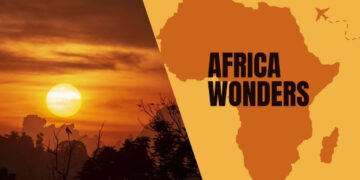In keeping with UNESCO’s resolution to promote indigenous languages throughout the 2022-2032 decade, we here at Bolingo are putting the Oshiwambo Language under the spotlight.
For this week’s article, we have had the pleasure of consulting with researcher and linguist Sarafina Frans about Oshiwambo. Here are some valuable facts we thought you should know.
Speakers of Oshiwambo can be found in Namibia, for the most part, but also in the northern region of neighbouring Angola. An estimated 1.2 million people in Namibia speak Oshiwambo. Historically, the Aawambo (also known as Ambo) people, whose language Oshiwambo is native to, originated from the Zambezi region around the 14th century and started settling down south in search of better pastures. From the banks of river Zambezi, down to the plains separating rivers Kunene and Okavango —a region now dubbed Ovamboland, this ethnic group has traveled far and wide to the point of becoming the most populous tribe in most towns.
In addition to being a language in its own right, Oshiwambo is part of a dialect cluster composed of 8 mutually intelligible languages: Oshindonga, Oshikwanyama, Oshikwambi, Oshingandjera, Oshimbalantu, Oshimbadja, Oshikwaluudhi and Oshikolonkadhi. These Bantu languages share close similarities in terms of semantics, morphology and overall composition. For the main part, they differ in intonation and pronunciation, which does not significantly hinder communication between speakers. Of the eight dialects listed above, Oshindonga and Oshikwanyama are the only ones that are used in the educational, religious and administrative spheres as writing systems have been elaborated for both. The written standards are called Kwanyama and Ndonga. Differences exist between the spoken language and the written form, namely from a phonological standpoint. For example, for the word “people”, a speaker of Oshikwanyama would say “aanhu”. Yet the standard spelling for the same word would be ”ovanhu”.
In writing, while the morphology of different scripts of the Oshiwambo language is mostly homogenous, the writing style may change following the variation that is being used. The spacing of words and within words constitutes a challenge in both readability and signification. For example, the word “opena” in the Oshikwanyama dialect means “a pen”. But writing “ope na” means “there is” or “there are”. This is a key challenge for which users of the language must pay close attention in order to avoid misinterpretation and misunderstandings.
Additionally, there aren’t always exact equivalents for widespread words and concepts from Oshiwambo languages to other languages such as English, which poses another challenge in translating the language. Although in the film industry, some productions found on digital streaming platforms show an increase in the use of Oshiwambo languages, with frequent switches between English, Afrikaans and other European languages that are known locally. There have otherwise been very few attempts at expanding the use of Oshiwambo over the web or in mobile phone applications.
Today, there is a noticeable decrease in the number of Oshiwambo speakers. This is in part attributable to globalization, but another factor is the preference for European languages displayed by parents when it comes to choosing which language their children should learn. Subsequently, it is quite common practice for a lot of parents to send their children to schools where Oshiwambo is not part of the curriculum.
As you may already be aware, there has been an alarming decline in linguistic diversity all over the globe. While the alarm is still ringing when it comes to losses in biodiversity, language loss on the other hand, has long been disregarded due to its less spectacular nature. The swan song of an indigenous language or dialect would sell less newspapers than the disappearance of the last white rhinoceros. But language diversity is as much of an indicator of a healthy environment as biological diversity is. In fact, recent studies found a high correlation between biodiversity and linguistic diversity. Essentially, this means that regions of the world with the highest linguistic diversity rate also display the highest biodiversity.









